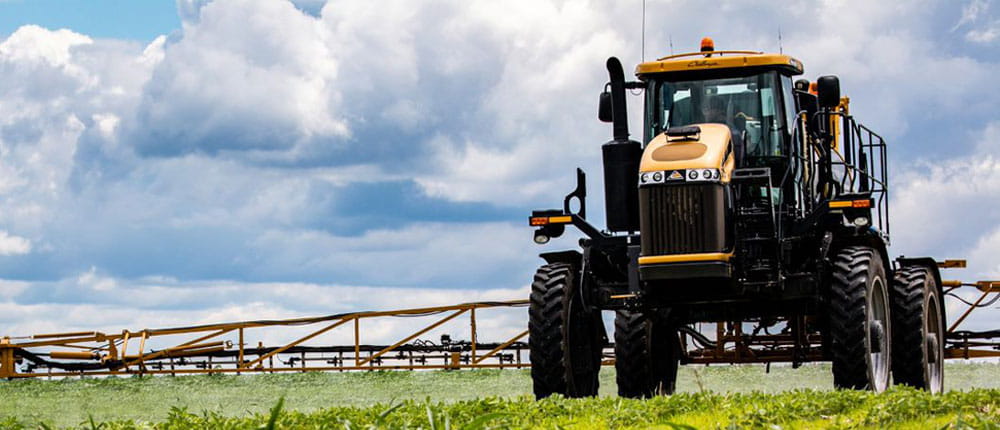Waterhemp must be competing with cockroaches to be the last surviving species on Earth.
At least that’s how it seems, given the vile weed’s ability to germinate throughout the growing season, scatter up to a million seeds per plant and develop resistance to multiple herbicides.
Paul Fossum, a soybean, wheat and sugarbeet grower who farms about 2,200 acres near Hillsboro, N.D., found himself in a pitched battle with waterhemp last summer.
How to match adjuvants and herbicides:
Matching an adjuvant to a herbicide mix and combining them properly takes planning, say CHS Agronomy technical specialists Corey Klaphake and Devin Wirth. They advise taking the following steps.
- Read labels carefully and always follow label directions.
- Only use approved adjuvants for your chosen herbicide(s).
- Check the amount of each product in the mix and the mixing order to ensure physical compatibility, solubility and pH.
- Run a compatibility test to ensure your adjuvant choice(s) and herbicide(s) work together. Remember, this will only point out whether they mix well, not whether the combination will hurt efficacy or crop safety.
- Ask an expert for help to ensure you are getting the most value from your crop protection investment.
“Waterhemp has become extremely difficult to control,” he says. “The patches were in an area where I couldn’t use dicamba, so I had to find another solution.”
Falling back on glyphosate, but knowing it couldn’t do the job alone, Fossum got an adjuvant recommendation from Craig Moen, his agronomy consultant at CHS Ag Services, based in Warren, Minn.
That decision made all the difference, he says. “I went back a week later and the waterhemp was dead.”
Fossum’s waterhemp-busting herbicide ally was CHS Level Best™, a nonionic surfactant, water conditioner and deposition aid.
“Weed control with a contact herbicide is all about coverage,” he says. “We notice when we use Level Best that it takes weeds down more quickly and effectively.” Fossum also uses Level Best with Roundup in sugarbeets and adds it to his desiccant treatment for potatoes.
Works Fast
Rapidly advancing herbicide resistance makes adjuvant choice more critical than ever, says Moen.
“Using an adjuvant that gets herbicides into the weed faster helps take down populations before they can spread. Level Best helps get the herbicide past the leaf cuticle into the plant so the active ingredient is absorbed.”
“Level Best is a difference-maker,” says Devin Wirth, a regional technical specialist with CHS Agronomy, who helps develop and support crop protection products for growers in North Dakota and Minnesota. “When you add it to the tank, you see nearly instant results.” Glyphosate typically controls weeds in 12 to 14 days, he explains, but by adding Level Best, “you could see wilting in five to six days and complete weed death in eight to 10 days.”
A hard-working adjuvant brings out the best in a herbicide mix, says Corey Klaphake, Wirth’s technical counterpart for Iowa and Illinois. Is that difference enough to justify an extra $2 or $3 per acre? “If it gives you peace of mind, it’s worth it,” he says.
“Some adjuvants cost more than we think they should,” Fossum says, “but if an adjuvant like Level Best makes everything better, I’ll continue to use it. We try to have a rough idea of what it will cost per acre to apply a herbicide mix, including the percentage attributed to adjuvants. If the adjuvant enhances the chemistry so it works on problematic weeds, it’s hard to put a value on that.”
Efficacy Wins
“We use a lot of Liberty [glufosinate] in my area,” says Klaphake. “It likes heat and humidity, but we’re often applying it in cool, dry conditions. Adding Level Best allows you to apply Liberty earlier in the day or when the conditions are less favorable.”
And more effective weed control helps prevent resistance development in surviving weed populations, Klaphake adds.
“A small number of weed species have confirmed glufosinate resistance. Let’s steward glufosinate so we can continue to use it.”
Quality Counts
When an oil-based adjuvant is called for, not all are created equal. “Conventional oil has impurities that add potential for crop burn,” says Wirth. “Soy-enhanced adjuvants made with refined soy oil are better tank-mix partners and have longer shelf lives, based on our trials.”
“You get a nice clean mix with purified oil,” adds Klaphake. “That gives you an optimal spray pattern and easier tank cleanout. Minimal separation in the tank means better performance and less hassle.”
Many herbicide mixes are still anchored in glyphosate — a water-loving herbicide. “We know oil and water don’t mix well,” says Wirth, “but the majority of herbicides paired with glyphosate are oil-loving. When you choose an adjuvant, you want one that helps you get the best performance out of glyphosate and the other herbicides in the mix. Moving away from a traditional crop oil concentrate to one with highly refined soy oil delivers greater efficiency.”
A growing line of adjuvants from CHS contain refined soy oil made from soybeans grown by CHS farmer-owners, improving herbicide performance and adding value for growers.
Check out the full C magazine with this article and more.




